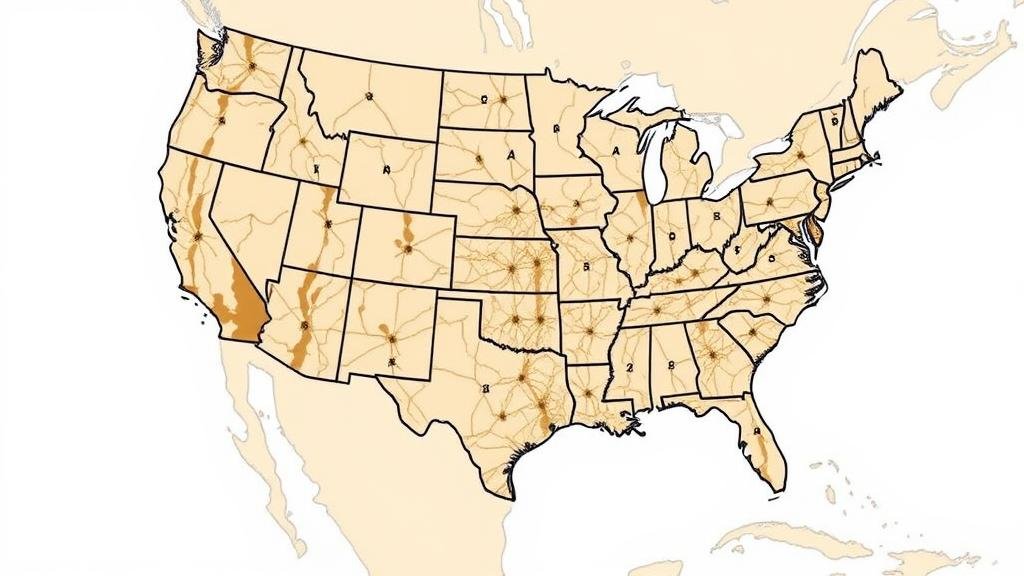Mapping Native American Artifact Sites Using State Archaeological Resources
Mapping Native American Artifact Sites Using State Archaeological Resources
The study of Native American artifact sites is a crucial component in understanding the cultural heritage and historical narratives of Indigenous peoples in the United States. Mapping these sites leverages state archaeological resources, which provide vital data for preservation, education, and cultural appreciation. This article explores the methodologies, significance, and implications of mapping Native American artifact sites through state resources.
Introduction
The importance of archaeological mapping cannot be overstated. According to the National Park Service, there are approximately 3,000 Native American sites listed in the National Register of Historic Places, many of which are linked to significant archaeological findings (National Park Service, 2021). These mappings not only serve a practical purpose in conservation efforts but also aid in repatriation discussions and educational outreach.
Methodologies for Mapping
Mapping Native American artifact sites typically utilizes state archaeological resources, including databases, geographic information systems (GIS), and existing surveys. These methodologies enable researchers to create accurate and comprehensive representations of artifact distributions across various regions.
- Geographic Information Systems (GIS): GIS technology enables archaeologists to visualize spatial relationships. For example, in Arizona, researchers have utilized GIS to document over 100,000 archaeological sites, correlating artifacts with geographical features to understand settlement patterns (Arizona State Historic Preservation Office, 2020).
- Archival Research: Many state archaeological offices maintain extensive archival databases. For example, the Illinois State Archaeological Survey provides detailed records of discovered artifacts, including their locations, types, and estimated dates.
Significance of Mapping Native American Sites
Mapping artifact sites plays a critical role in preserving Native American cultural heritage. It offers several benefits that include:
- Cultural Preservation: Documenting artifact sites helps protect them from damage due to urban development or environmental factors. For example, the California Office of Historic Preservation actively maps archaeological sites to ensure they are considered in state planning processes.
- Public Education: Maps can serve as effective tools for educating the public about Native American history. The Wisconsin Historical Societys online mapping applications allow users to explore archaeological findings, fostering a greater understanding of Indigenous contributions to local history.
Real-world Applications
The application of mapped data extends beyond academic interest; it has practical implications for local governments, infrastructure projects, and tribal communities.
- Infrastructure Planning: In North Dakota, state agencies require the consideration of mapped archaeological sites when planning roads and development projects, as mandated by state preservation laws.
- Tribal Consultation and Repatriation: Understanding the locations of significant artifact sites aids in discussions with tribal nations regarding repatriation of items held in museums, as outlined in the Native American Graves Protection and Repatriation Act (NAGPRA).
Challenges in Mapping
Despite the advancements in technology, several challenges persist in mapping Native American artifact sites:
- Data Accessibility: Some archaeological data may be restricted to protect sensitive cultural information, resulting in gaps in public knowledge and awareness.
- Interagency Coordination: Effective mapping often involves collaboration among various state agencies, which can sometimes lead to bureaucratic delays in data sharing and project implementation.
Conclusion
Mapping Native American artifact sites through state archaeological resources is an essential endeavor that promotes cultural preservation, public education, and informed policymaking. While methodologies have evolved with technology, continuous effort is needed to address the challenges faced in this field. As our understanding of Native American history expands, so too does the importance of protecting and honoring these significant cultural landscapes.
Future research should focus on enhancing data accessibility while fostering partnerships with tribal communities to ensure that mapping initiatives align with Indigenous perspectives and priorities. By doing so, we can cultivate a more inclusive, accurate portrayal of American history that respects and celebrates the rich heritage of Native American peoples.
Actionable Takeaways
For researchers, policymakers, and community members interested in furthering their involvement in the mapping of Native American artifact sites, consider the following steps:
- Engage with local archaeological resources and databases available through state preservation offices.
- Participate in community discussions regarding cultural heritage preservation and the significance of Indigenous histories.
- Advocate for policies that prioritize accessibility to archaeological data while respecting cultural sensitivities.
References
National Park Service. (2021). National Register of Historic Places. Retrieved from https://www.nps.gov/subjects/nationalhistoriclandmarks/national-register-of-historic-places.htm
Arizona State Historic Preservation Office. (2020). Archaeological Sites in Arizona. Retrieved from https://shpo.az.gov/archives/archaeological-resources
Wisconsin Historical Society. Online Mapping Applications. Retrieved from https://www.wisconsinhistory.org/Records/Article/CS9841
Native American Graves Protection and Repatriation Act (NAGPRA). Retrieved from https://www.nps.gov/nagpra/



